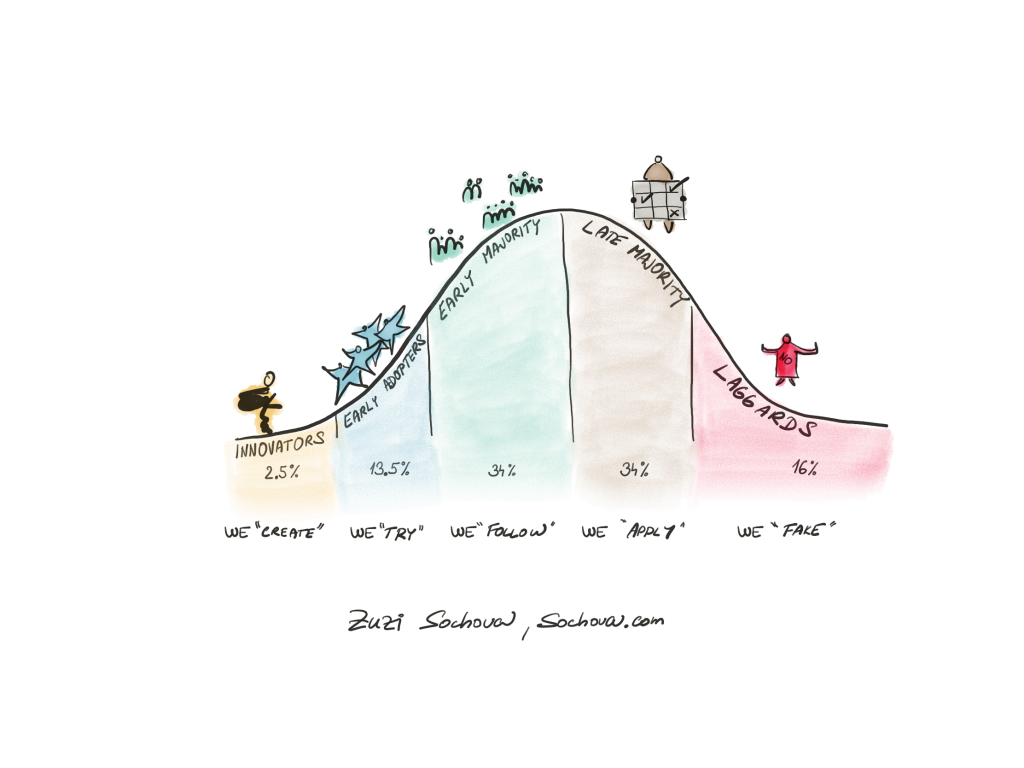Over the years, I was hoping that if we, agile coaches and trainers do our job well, we can multiply the success we experienced. I was part of the early adopters’ wave of agility. We were open to trying new things, experimenting with different ways of working, trying one step at a time, and inspecting and adapting along the way. And it worked. I experienced the new energy, better outcomes, happier customers, and more successful products.
Later I leveraged that experience, became an agile coach, and started helping various organizations with their agile transformation. I was able to smooth their journey and help them to avoid some mistakes we made when we started. Then early majority came, it felt harder, but also good because they were able to pivot and get better. They were genuinely trying to change. It might have looked difficult at the beginning, it was definitely not a straightforward journey, but it worked as they developed the continuous change and improvement muscle. After a while, it was not that hard to help those organizations to shift. They were open to change and therefore successful.
When the late majority hit, it brought those tough environments where people apply various scaling frameworks, trying to find a recipe, looking for shortcuts. They wanted to be done with it quickly and go back to normal. They were often not willing to stop and rethink how they wanted to progress. That’s the golden era of consultancy companies, with their big bang agile transformations. The satisfaction with a change was not always great, as to achieve something they needed to go through several waves of agile transformations, trying to get out of the habits, complicated project structures, hierarchy, and irrelevant metrics. As they were often repeating the same mistakes over and over again, success was not that easy to get. But eventually, they realize that agile is not another process and reconnect to the mindset.
Now, I start seeing some of the laggards and it makes me wonder why they feel a need to pretend they want to change because their constraints are often so fixed that it simply won’t work. Implementing agile without changing the way you work will only create pain and no meaningful outcomes. And yet I do the same as I always did. Try to find enthusiastic individuals, who are ready to start challenging the status quo. For the rest, I put a seed in their minds. It will grow eventually. Maybe they can’t do much about it now, but in some time, they remember it and go for a different way of working.
Success is not about practices, it’s not about tools, it’s about the ability to challenge the status quo and change the way you work. Let’s together transform the world of work.
